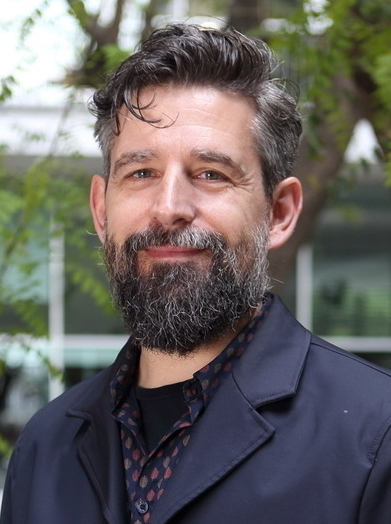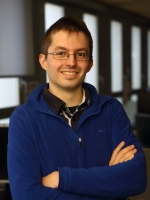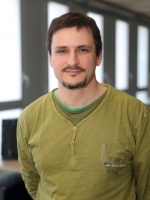Instructors
Marc A. Marti-Renom
Affiliation: Centro Nacional d’Anàlisi Genòmica (CNAG) and Center for Genomic Regulation (CRG), Barcelona, ES ORCID ID

Marc A. Marti-Renom obtained a PhD in Biophysics from the Universidad Autonoma de Barcelona (UAB) where he worked on protein folding under the supervision of B. Oliva, F.X. Aviles and M. Karplus (Nobel Laureate for Chemistry 2013). After that, he went to the US for a postdoctoral training on protein structure modelling at the Sali Lab (Rockefeller University) as the recipient of the Burroughs Wellcome Fund fellowship. Later on, Marc was appointed Assistant Adjunct Professor at UCSF. Between 2006 and 2011, he headed the Structural Genomics Group at the CIPF in Valencia (Spain). Currently, Marc is an ICREA research professor and leads the Structural Genomics Group at the National Center for Genomic Analysis - Centre for Genomic Regulation (CNAG-CRG) in Barcelona. His research group employs the laws of physics and the rules of evolution to develop and apply experimental and computational methods for elucidating the 3D structures of macromolecules and their complexes.
Marc has published over 120 articles in international peer-reviewed journals. He coordinated two international teams funded by the EU (Era-Net Pathogenomics Grant) and the HFSP (Research Grants Award) and was co-PI on the 4DGenome Grant funded by the ERC Synergy program as well as the co-PI on the MuG Research project funded by the European Commission H2020 program. In the last few years, Marc played a key role in Europe to promote the 4DNucleome Initiative, which recently joined forces with the single-cell and organoid communities to form the LifeTime Initiative towards a FET-FLAGSHIP in Europe to which he is a Steering Committee Member. Recently, Marc has been funded by the NIH CEGS program for deciphering the genome structure using microscopy approaches.
Marc collaborates in GTPB as an instructor since 2008. PGDD08 - Pharmacogenomics: new opportunities for drug discovery; SG09 - Structural Genomics; SGDD10 - Structural Genomics and Drug Design; CSDM14-Chromosome structure determination using modelling and Hi-C data; 3DAROC16 - 3C-based data analysis and 3D reconstruction of chromatin folding; 3DAROC18 - 3C-based data analysis and 3D reconstruction of chromatin folding.
Marco di Stefano
Affiliation: Institute of Human Genetics (IGH), Centre National de la Recherche Scientifique (CNRS), University of Montpellier, Montpellier, FR. ORCID ID

Marco di Stefano obtained his PhD in Biophysics in 2014 from the Scuola Internazionale Superiore di Studi Avanzati (SISSA) working on Physics-based structural models of chromosomes to study the relationship between gene co-expression, gene co-localization, and chromosome entanglement. He moved as a post-doctoral researcher to the structural genomics group of Marc Marti-Renom at CNAG-CRG (Barcelona, ES). His main research interest was the integration of chromosome conformation capture data, epigenomics, and polymer Physics to study constitutive mechanisms of chromosome folding.
In October 2020 he moved to the Institute of Human Genetics (Montpellier, FR) as a senior post-doc in the Chromatin and Cell Biology group led by Giacomo Cavalli. He is extending his studies on the relationship between epigenetics, gene expression, and genome structural organization and dynamics. He has been involved in GTPB as an instructor for 3DAROC16 - 3C-based data analysis and 3D reconstruction of chromatin folding.
David Castillo
Affiliation: Centro Nacional de Análisis Genómico (CNAG) and Center for Genomic Regulation (CRG), Barcelona, ES
David Castillo obtained his MSc in Photonics from the Universitat Politècnica de Catalunya in Barcelona (Spain) where he worked in Super-resolution microscopy. He has a background in Physics and Engineering.
He works as a technician in the Structural Genomics team of Marc A. Martí-Renom at CNAG-CRG (Barcelona), developing tools for the analysis, modelling and visualization of Hi-C data.
David is also interested in the integration of microscopy into the modeling of genomic 3D structures.He has been involved in GTPB as an instructor for 3DAROC18 - 3C-based data analysis and 3D reconstruction of chromatin folding.
Back
Back to main page.
